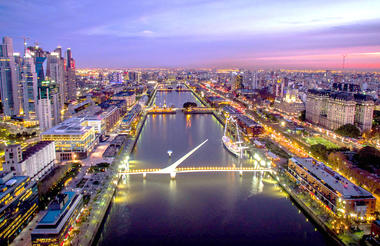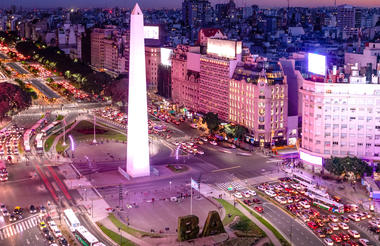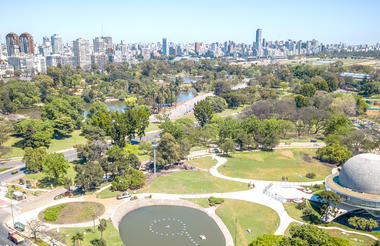Situated on Argentina’s stunning Rio de la Plata coast, Buenos Aires is a thriving portside capital defined by a rich history, vibrant culture, and strong European influence - thus nicknamed the Paris of South America. Countless museums covering a cornucopia of subjects; an active theatre culture; carnivorous buffets second to none; sensuous tango performances; a mosaic of architecture; and shops to fit all fancies – all these facets and more make up the seductive blend that is Buenos Aires. Some of the city’s highlights include the buzz of the La Bombonera Stadium; tango and milonga venues like the Bohemian La Catedral; and heritage architecture such as that at the Cementerio de la Recoleta, where visitors can wander through a ‘city’ of massive statues and marble mausoleums. Don’t miss the International Festival of Independent Cinema and the vibrant annual Pride Parade.



An enticing mix of historical architecture, picturesque views and sprawling vineyards await travellers to Salta, located in the lovely Lerma Valley in the Andean foothills. Simply wandering through the streets of the central city area will take you past a variety of impressive 18th and 19th-century buildings, including the neoclassical Cathedral of Salta, the ornate Church of Saint Francis and the Museum of High Mountain Archaeology – housing a collection of ancient Inca relics. Other popular attractions are the area’s array of exceptional wineries, and the panoramic views over the region visitors from the top of San Bernado Hill.



The ochre cliffs of the Cerro de los Siete Colores (The Hill of Seven Colours) form a magical backdrop to this charming rural village. The colourful layers have been formed over 600 million years by the accumulated deposits of sea, lake and river sediments. The unmistakeable image of the village against these multi-hued mountains can be found on postcards across the country. Every day there is a vibrant market in the central square, where locals and tourists can purchase clay pots, woven goods and handicrafts. Don’t miss a visit to the village church, Iglesia de Santa Rosa de Lima, which was declared a national monument in 1941.



As previously described



Located in northern Argentina and flanking the Rio Grande River, the UNESCO-listed Quebrada de Humahuaca is a narrow mountain valley known for its mesmerising rock formations and its indigenous Quechuan villages. The Hill of the Seven Colours (Cerro de los Siete Colores) is a rainbow masterpiece, while the limestone formation called Serrania de Hornocal presents a sculpture of triangular-shaped striped rockfaces. The desert valley holds evidence of life dating back 10, 000 years, from early hunter-gatherer tribes to pre-Hispanic communities, Incan culture, Spanish colonizers, and into the 20th century. The villages of Quebradea are filled with ancestral roots, as the indigenous peoples of the area still practise the same rites, festivals, art, music and agricultural techniques as they did hundreds of years ago, making this a unique place to experience traditional culture firsthand.



Resting in the picturesque of Quebrada de Humahuaca valley, the enchanting town of Tilcara is set in the Jujuy Province in northern Argentina. It is known for its rich traditions, scenic landscapes and delicious cuisine. Explore the steep streets lined with earth-and-straw brick buildings, or visit the pre-Hispanic Pucara Ruins, the Sculptures Museum, and a fascinating Carnival Museum. Other activities in and around the city include caravanning with lamas, visiting the local botanical gardens, and meandering along the Garganta del Diablo, an imposing waterfall in the Huasamayo River. Don’t miss a visit to the Dr Eduardo Casanova Archaeological Museum and the incredible Jose. A. Terry Museum to see superb paintings of local life.








